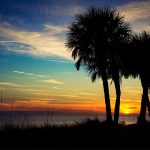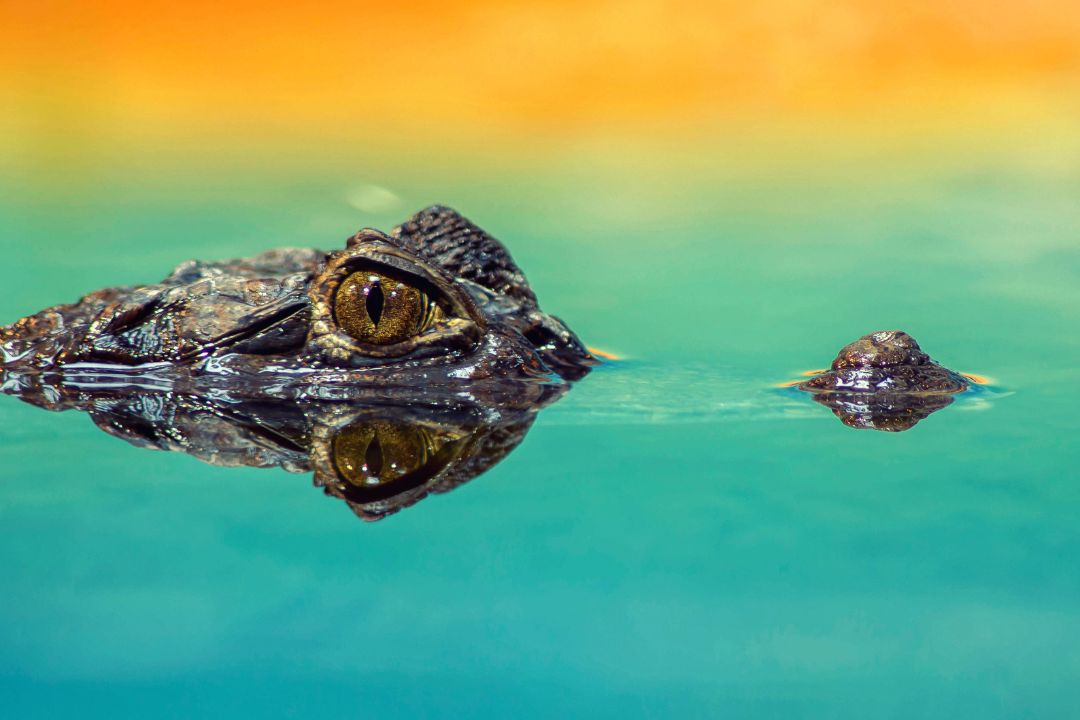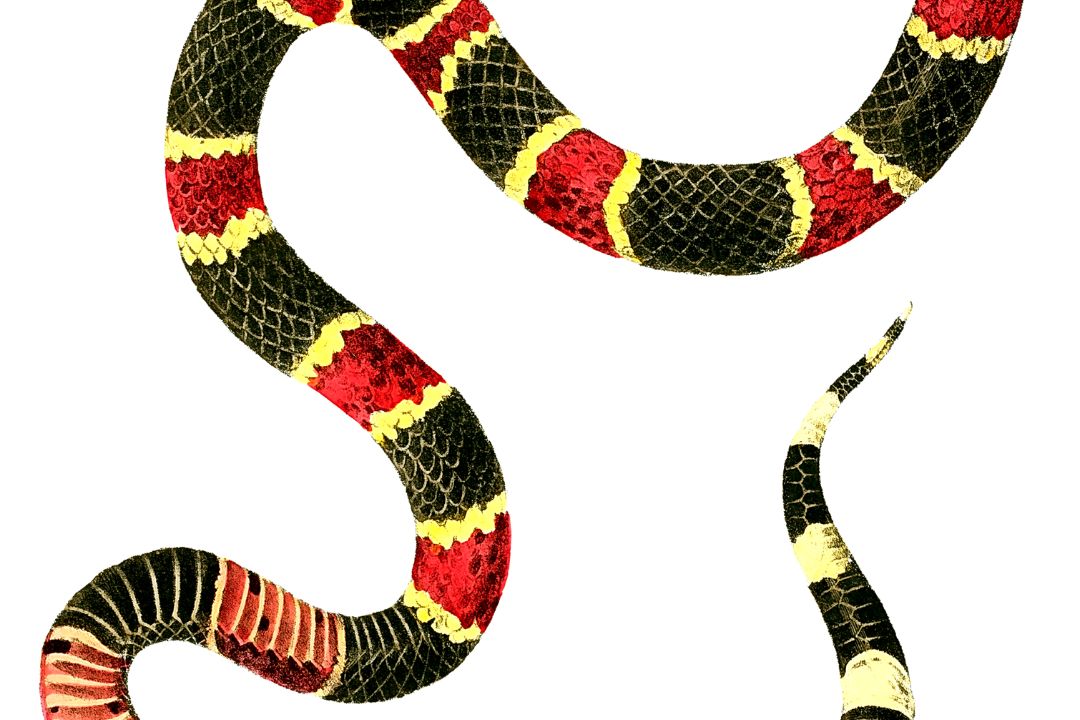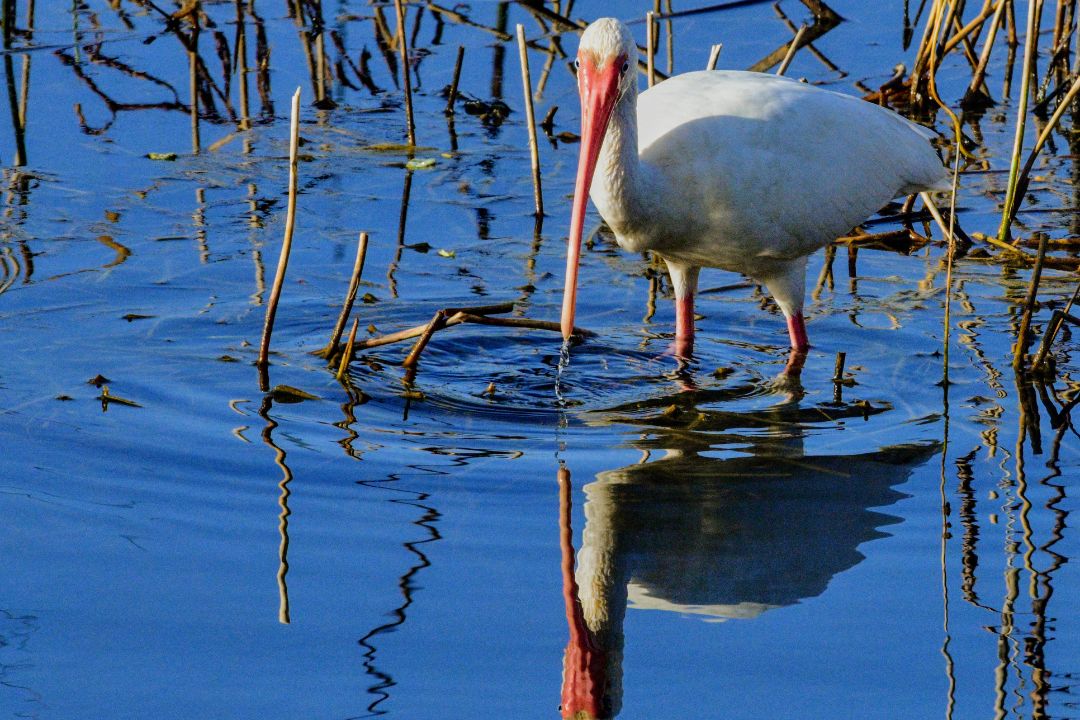Exploring the Rich History of Florida’s Iconic Tree: Sabal Palm
As we gently tread upon the history of Florida’s green lush expanses, one icon stands unwavering and majestic against the backdrop of a sun-kissed horizon, gracing the state’s landscape with its profound grace and beauty. The Sabal Palm, indelibly woven into the very fabric of the Sunshine State, is our subject of interest, a plant deified in the annals of Florida’s botanical heritage.
A long breath of the past leads us to a time when the indigenous people of Florida, the Seminole Tribes, lives were bent and shaped by the unique characteristics of this extraordinary tree. For them, the Sabal Palm, also revered as the ‘Cabbage Palm’, was much more than a mere tree. These hardy palms, swaying rhythmically with the gentle Florida breezes, offered rich, edible hearts, while their sturdy fronds provided materials for shelter and crafting tools. Their lives mirrored the resilience of the Palm, learning to withstand the passing hurricanes, just as the Sabal Palms stood steadfast, unyielding in the fulcrum of nature’s wildest weather.
The Legal Recognition
So iconic is its presence, that, on November 15, 1953, the Sabal Palm was officially adopted as the Florida State Tree, a testament to its cultural, historical, and environmental significance. The long road of the Sabal Palm, from a life-sustaining staple for the native tribes to an emblem of state pride, mirrors the transformative journey of Florida itself.
The Sabal Palm Today
The modern-day story of the Sabal Palm is not solely confined to accolades on official papers. Echoes of its importance reverberate still, as it continues to shape the lives and landscapes of contemporary Florida. The Sabal Palm, a keystone species with an essential role in local ecosystems, supports countless other organisms and contributes to the biodiversity of the region.
The Sabal Palm is also an aesthetic marvel, an enthralling sight to behold. Whether you’re teeing off on one of Florida’s premier golf courses, lounging on its sugar-white beaches, or diving into its crystal-clear springs, the Sabal Palms standing tall in the distance will never fail to enhance the scenic beauty of your surroundings.
So let us celebrate the Sabal Palm – a symbol of resilience, an icon of heritage, and the crowned jewel in Florida’s verdant tiara. The story of the Florida State Tree is interwoven with the story of Florida itself. And as we visit every tree-lined avenue, every beach-side resort, we engage in a silent dialogue with history, tradition, and the unwavering spirit of resilience.

From Seedling to State Symbol: The Sabal Palm’s Journey
Our story begins with the smallest of beginnings, a humble seed. This seed, cradled by the generous soil of Florida, holds within it the possibility of a tree that has come to stand as a symbol for an entire state: theSabalsabal PalmPalm, ceremonially known as Corypha umbraculifera, the crown jewel of the Sunshine State.
The Sabal Palm, with its robust trunk textured like old parchment and indomitably pointing heavenwards, unfurls its emerald fronds, cradling the sky. Resilient and graceful, it dances unfettered with the tropical winds, a dance of survival, perseverance, and unyielding spirit. Its journey from a tender seedling pushing through the soft sandy blends of Florida soil to towering, imposing arboreal specimen is nothing short of poetic.
A Seedling’s Chronicle
The life of a Sabal Palm begins beneath the earth, initially out of sight but never out of place or purpose. Bathed beneath the fertile fringes of Florida’s sweeping ecosystem, the steadfast seedling plunges roots delicately into the ground. It crafts a subterranean web of life ensuring its survival against the unpredictable waltzes of nature. Above the ground, the nascent Sabal Palm spirals towards the sun, ever-reaching, drawing strength from the celestial body’s radiant embrace.
Over the years, the seedling that once peered shyly from the earth’s bosom morphs into a forest’s titan, its raw, unfettered growth echoing the unbridled spirit of life itself. As it thrives amidst the cacophony and polyphony of the surrounding flora and fauna, the Sabal Palm carves itself an integral niche in the ecosystem, providing refuge and sustenance to numerous life forms.
A Emblematic Transition
The Sabal Palm’s climb not just towards the sky, but into the sociocultural fabric of Florida, speaks of a tale intertwined with timeless human narratives. The indigenous tribes of Florida revered the tree, utilizing its fronds for weaving roofs, its trunk for creating tools, and its fruits for sustenance. These tribes recognized the Sabal Palm’s strength, sustenance, and beauty, qualities that still define the spirit of Florida today.
In 1953, this historical and cultural significance led to the Sabal Palm’s legal christening as the state tree of Florida. Thus, the Sabal Palm’s growth extended into symbolic dimensions, its widening shadows embodying the spirit of Florida: a spirit that combines human endurance, the vibrancy of culture, and the impassioned rhythm of nature.
Even today, as you behold a Sabal Palm, you’re not just looking at a tree. You’re witnessing the testament of a seedling that has valiantly grown into a state symbol, a leafy sentinel standing tall, mirroring the glorious legacy of the Sunshine State. It is a living narrative of a journey underpinned by transition, resilience, and an unceasing will to thrive.

A Canopy of Life: Exploring the Biodiversity Supported by the Florida State Tree
The Sabal palm, the Meritorious Floridian icon, stands as a green exclamation point in the narrative of the state’s diverse biosphere. This quintessential emblem of Florida, with its swaying fronds and stout trunk, is more than a visually stunning fixture in the landscape. It is, indeed, an anchoring point for an array of organisms that have evolved, thrived, and survived in the unique ecosystem it supports.
The Verdant Refuge
Spy with your keen eyes the intricate ecosystem that rests on each branch, each root, each leaf. Above, its swaying fronds are a sanctuary for avian life. With their strong midribs and supple leaflets, they create secure foundation for nests. From the majestic osprey to the delicate Florida wren, the Sabal palm provides an abode for them to sing their melodious lullabies, recounting tales of survival, courtship, and birth.
The Insect’s Eden
Ambulating the length of the trunks, a wave of tiny, tireless workers—ants, beetles, spiders—all find solace and survival beneath the bark. They are the busybody janitors of the tree, making sure not a speck of detritus escapes their keen eyes and industrious mandibles. The Sabal palm—this minute jungle—nourishes and nurtures, providing food and shelter to these tiny powerhouses of our ecosystems.
Reliance and Reciprocity
The roots, piercing through Florida’s sandy soil, form a covert network of life. They embody the essence of reciprocity in nature, acting as hosts for distinct fungal groups, while simultaneously receiving nutrients and water absorption benefits from this intimate association – a veritable testament to the interdependence of species.
The Sabal palm’s flowers and fruits are nothing short of a cornucopia for a variety of mammals and birds. Critters like squirrels and raccoons relish the fruits, while the flowers are a darlings of bees, butterflies, and hummingbirds, which feast upon the nectar and, in turn, play an essential part in the tree’s pollination.
The Understory Universe
At the palm’s base, the understory universe hums with the rhythm of life. Among fallen and decaying fronds, a breaking down and recycling of nutrients takes place, a service to not just the palm but the surrounding vegetation as well. Beyond providing substrates for these decomposers, the Sabal palm, with its year-round leaf fall, also forms essential habitats for a host of critters, from burrowing beetles to nesting reptiles.
The Sabal palm, the arboreal heart of Florida’s biodiversity, embodies a testament to life’s tenacity and diversity. Each part of it, from crown to trunk to root, supports a myriad of life forms in a compelling dance of dependence and survival. It stands as a poignant reminder that our existence, too, is entwined with these eons-old organisms that dutifully and silently pulsate with life.

The Florida State Tree and its Important Role in Ecosystem Restoration
In the grand ballet of nature, every entity has its part to play. One prima donna pirouetting through Florida’s environmental dance is none other than the state’s treasured Sabal Palm, a tree of pivotal importance in ecosystem restoration and resilience.
We find ourselves gazing at the besotted silhouette of the Sabal Palm, nature’s veritable linchpin, rising sturdy trunks and unfurling evergreen fronds into the sky. This seemingly unremarkable tree, often unnoticed amidst the grandeur of the Everglades, plays a critical role in the ecological fabric of the region, nurturing diverse organisms, anchoring soils, and mitigating climate change.
It is humility incarnate, overshadowed by soaring cypress and mangroves, yet silently preserving the integrity of the landscape, drip by drip, frond by frond.
The Sabal Palm facilitates ecosystem restoration in profound ways. By serving as a biological pioneer, the hardy tree colonizes disturbed soils, paving the way for other vegetation to follow, consequently rejuvenating the land. Its robust root system, a wiry filigree beneath the earth, efficiently holds soil against erosion, thereby maintaining land stability and preventing runoff that might jeopardize water quality.
Its value as a carbon sink, an innate attribute of its biological wiring, cannot be overlooked. Every inch of the Sabal Palm, from the tips of its crown to the depth of its roots, serves to sequester carbon dioxide from the atmosphere, embodying a tangible plant-forward response to the threat of climate change.
In addition, the Sabal Palm’s distinctive flowers provide an abundant source of nectar for pollinators, its fruit feeding an array of wildlife, kickstarting the wheel of life anew with each season. These spiraling fronds cast a cooling shade, moderating temperatures and providing a haven for understory creatures, thereby maintaining the equilibrium within the overlapping ecosystems. The Sabal Palm is not merely a vine-draped landmark on postcards or a native sentinel against tropical storms; it is a harmonizer, a rebuilder, a healer.
As Florida marches towards conserving and replenishing its ecological heritage, the Sabal Palm stands tall and steadfast, responding with resilient grace. It bears testament to the potential sheer determination of an individual tree species to restore ecosystems; silent, yet enduring, enriching all life within its generous span.

Sabal Palm: A Natural Haven for Recreation and Leisure
Gently swaying in the Floridian breeze, the Sabal Palm doesn’t just stand as a stalwart symbol of this sun-kissed state. It provides ample shade and solace, transforming the landscape into a natural playground where locals and visitors alike can indulge in a multitude of recreational activities.
Imagine yourself picnicking underneath this iconic umbrella, the warm rays of the sun kept at bay by the Sabal Palm’s broad, verdurous canopy. Or perhaps, strolling casually through a park, its trails bordered by these beautiful trees that stretch out their fan-like fronds as if trying to touch the cerulean sky with their verdant fingertips. They stand tall and welcoming, like silent sentinels, punctuating the landscape with their fierce, yet graceful mien. They frame vistas, complementing fishing ponds and playgrounds, and serving as the preferred shady retreat for those leisurely afternoon siestas.
When’s the last time you pressed your fingers into the rough-hewn bark of a Sabal Palm? When did you last stare up in wide-eyed admiration at the towering elegance stretching into the clear blue canopy? Now, consider doing so again. You might feel a sense of profound peace, the sort that nature invariably confers upon tired urban souls.
Marvel at the Sabal Palms adorning golf courses, their constant rustling whispering words of encouragement to golfers preparing to take that perfect swing. The Sabal Palm doesn’t merely accommodate recreational enjoyment, it actively contributes to it. This tree does not herald restriction, but openness, a symbiotic partnership where it fosters happiness, tranquility, and good health among recreators while they ensure its perpetuity with their respect and affection.
Florida’s state tree offers more than just shade or a striking aesthetic presence. It provides a connection to the state’s natural heritage and rich biodiversity. It stands as the gathering point for shared laughter during balmy summer picnics, the silent witness to passionate love stories blooming under its dappled shade, and the calm companion to solitary contemplation. In this way, the Sabal Palm weaves itself into the fabric of Floridian life, offering not only natural utility, but emotional sustenance.
In key essence, the Sabal Palm is more than just a tree, and Florida is more than just its home. Together, they form an enduring tableau of natural harmony, where recreation is an integral aspect of life and leisure is a well-earned solace beneath the verdant mantle of the state’s beloved tree.

A Symbol of Unity: The Sabal Palm in State and Community Celebrations
When we delve into the realm of public celebrations, the Sabal Palm’s notoriety takes on an even grander scale. Pervading through the social, cultural, and even political panorama, Florida’s state tree stands as a profound emblem of unity and shared identity.
In the resounding rhythm of countless parades, where floats and banners illustrate the vibrant tableau of Florida life, you will find the silhouette of the Sabal shining in the festival sun. It crests gently on public seals, marrying officialdom with the state’s inherent natural beauty. For the Floridian, the Sabal Palm is more than mere window dressing at these significant gatherings. Rather, it provides a continuous thread that weaves the people and the landscape into an intricately connected tapestry.
“Just as the Sabal Palm roots reach deep into the Floridian soil, so too does its symbolism nestle into the heart of our harmonious community.”
There is an element of sacred reverence attached to the Sabal Palm. Deeply ingrained in communal life, the tree often plays a prominent role in the stage setup for open-air concerts, visual compositions for fireworks display in jubilee celebrations, and as a quintessential backdrop for photographing memorable events. This tangible interaction with the Sabal Palm lends these otherwise ephemeral moments of glory and shared joy with a sense of timeless, grounded belonging—like a rich chord struck in the resonant symphony of Floridian life.
It is much like a perennial gathering beneath the lush, green canopy of the Sabal, around which community life waxes and wanes. Whether it’s for commemorating historical events, celebrating state holidays, glorifying achievements or congregating for local events—the Sabal Palm is always considered an integral part of the setting. The tree’s engraved presence in these festivities and ceremonies does not simply honor the tree itself but rather, the enduring spirit and unity of the Florida community.
No doubt, the Sabal Palm has transcended beyond its botanical existence. It serves as a monumental pillar that supports, incites, and rejoices in the ebb and flow of community life. It inspires a shared sense of identity and camaraderie among the populace, standing tall as a symbol that binds, unifies, and immortalizes Florida’s ceaseless community spirit.

Sabal Palm: A Source of Inspiration for Artists and Photographers
As you meander along the sun-drenched paths of Florida, the image of the indomitable Sabal Palm is indeed a wonder to behold. Beyond its ecological significance, this elegant tree bestows a profound influence upon the creative souls who seek its inspiration. It is not merely a tree; it is an unspoken muse for the artist’s canvas and the photographer’s lens.
Through the veil of dawn, when the world is but a silhouette, the silhouette of the Sabal Palm penning its inky signature against the morning blush has been an inspiration to countless painters. It’s fringed cloak, bathed in the day’s nascent rays, manifests an ethereal vision that translates into vibrant oils and pastels, etching their impressions upon the heart and soul of the canvas.
“The majesty of the Sabal palm, captured in the language of visual art and photography, rekindles our primal connection to nature, and reinforces the need to preserve its serenity.”
For photographers too, the regal Sabal palm presents an enigma, a complexity hidden within its ordinary facade. Hallowed by the sun’s glamour during the day, the palm displays an array of textures and hues, inciting photographers to portray the tree’s quotidian magnificence. Moonlit nights clothe it in an aura of mystery, offering another realm for exploration through the camera’s discerning eye.
In essence, the Sabal Palm does more than standing tall against the azure Florida sky. It channels its existence through the evocative works of artists and photographers, becoming a symbolic representation of Florida’s natural grandeur and resilience. This graceful muse unobtrusively threads its way into the fabric of society, influencing art and culture, and binding the community with a shared love and admiration for their magnificent state tree.
In a beautifully symbiotic relationship, artists and photographers immortalize the Sabal Palm, as it continues to inspire and enchant, deeply ingraining the tree’s silhouette into our sensory memory. To witness the Sabal Palm through the artists’ interpretations, is to witness the tree’s soul – sun-dappled, resolute, radiant, and forever Florida’s pride.

Delving into the Cultural and Natural Heritage of the Sabal Palm
Like whispered tales of yore, stories about Florida’s iconic tree seep into the fibers of the state, threading its history and culture. The Sabal Palm, Sentinel of the Subtropics, commands a reverence that resounds from its towering presence, the strength and resilience ingrained in its trunk, insinuated in the brilliance of its fronds.
Native Americans, long before the first Europeans set foot upon Florida’s sandy shores, were privy to the strength and versatility of this titan of the tree world. From its roots to its crown, they saw the lifeline the Sabal Palm offered – its leaves served as roofing for chickees, while the heart was a culinary delight, and its trunk, when hallowed, provided protection in marshy environments. Can you envision their days, as they navigated the wilderness, with this stalwart protector by their side, whispering of resilience and survival?
The legacy lives on. As you tread the streets of modern Florida or trace the course of its splendid coastline, you’ll see the proud figure of the Sabal Palm, silhouetted against the searing hues of the sunset, or standing undeterred by inclemency, as though ready to tell its tale to anybody willing to listen.
From a scientific perspective, the Sabal Palm – or Sabal Palmetto as it is also whimsically named – commands respect. It’s not just a tree. Rather, it’s a perennial icon of the state’s diverse ecological system. Resilient in the face of fire, voracious in its appetite for sun, gracious in offering shade, the Sabal Palm is also home to a myriad of creatures. Its fruits serve as sustenance for a range of species, from sprightly mockingbirds to lumbering turtles whilst its broad leaves are havens for tree frogs. In its reach and in its stance, it underscores Florida’s rich biodiversity.
The palm tree is an iconic representation of Florida’s paradise-like landscapes and sunny disposition.
– Mark Johnson
The Spiritual Connection
Steeped in the heart of Florida’s folklore and mythology, these towering sentinels are more than geographical markers; they take root in the hearts and spirits of the people. In the indigenous Seminole and Miccosukee tribes, the Palm stands as an emblem of peace and a link to the heavenly spirits. Even now, in the face of modernity, the spiritual palm persists, imparting its silent wisdom onto those who seek solace beneath its shade.
The tale of Florida’s iconic state tree, the Sabal Palm, is more than a physical journey. It intertwines with the cultural, historical, and spiritual journey of the state itself. As we peel back its layers, we reveal the true character of Florida’s symbol: resilient, beautiful, and deeply interwoven with the lives of those who dwell under its sheltering leaves.

The Florida State Tree in Art, Literature, and Popular Culture
There’s a remarkable beauty to the Sabal Palm, the state tree of the sun-bathed plains of Florida, a beauty that has not only echoed through its lush swamplands but has, over time, seeped its way into the chapters of art, literature, and popular culture.
The tree, with its earnest, towering resilience and verdant flourishes, serves as an muse for artists, its image etched onto countless canvases, where different interpretations of its majestic form come to life. Some works, like the intricate and lovingly crafted depictions by regional artist Windham Haslam, capture the Sabal Palm in all its stoic serenity, its fronds splayed against an azure sky, rippling on the edges of mirror-like marshes.
The world of literature, too, is a burgeoning garden that celebrates the Florida State Tree. Authors often depict the Sabal palm as an indomitable symbol of power, hope, and the enduring rhythms of nature. Its proud silhouette and the rustling music woven by its fronds beneath the Floridian sun, serve as potent metaphors in the narratives, it’s presence often foreshadowing growth, resilience, and rebirth.
From the illustrious pen of Zora Neale Hurston to the vivid environmental essays of Marjory Douglas Stoneman, the Sabal Palm has found it’s way into respected works of literature. The lines of poetry too, sway to the rhythm of the palm’s whispering leaves as they unveil tales of enduring strength, unity, and the ceaseless circle of life.
“The palm trees stand like hunch-backs, bearing the scars of sunburn and winds with stoic endurance.” – From the journal of Marjory Stoneman Douglas
Moreover, popular culture has wielded the Sabal Palm as a symbol of the state’s identity, embedding the iconography into its core. Florida’s sports teams, including the Miami Hurricanes and the Florida Panthers, prominently feature the state tree in their logos. Similarly, the Sabal Palm gleams on the state license plates, reinforcing a visual ubiquity within households and streets.
Elsewhere, in the realm of cinema, the towering emblem often graces film and television settings, its spindly silhouette imprinted against the backdrop of the Floridian landscape, a constant, silent, and strong spectator of unfolding narratives.
Not just an object of admiration, the Sabal Palm is a part of Florida’s heartbeat, coursing through its veins in forms of art, literature, and popular culture. It’s not just a tree; it’s a symbol, a character, a silent chronicler, and resilient hero in the unwritten stories of the sunshine state. It is a majestic testament to the eternal bond between nature and human creativity.

Preserving and Protecting Florida’s State Tree for Future Generations
As the twilight rosily gilds the Sabal Palms standing tall and proud, let us turn our gaze into the future. The stewardship of these grand sentinels, the testaments to the enduring spirit of Florida, becomes a paramount concern for us all. They are more than natural entities; they are the resonating strands of our shared cultural, social, and environmental symphony. Indeed, the Sabal Palm’s preservation is our preservation, our legacy for those yet to come.
Gone are the days when the Sabal Palm was taken for granted, its multiplicity misconstrued as immunity to harm. Today, we are beginning to understand our role in the orchestra of time, as the custodians of the tree that is a symbol of our identity.
The Challenge at Hand
Current threats to the Sabal Palm are manifold. Invasive species threaten to upset the natural balance. Disease looms like an unwelcome storm cloud. Unplanned urban development poses an unerring, rapidly advancing threat. Yet, I believe hardships have a way of unveiling resilient spirits, and it is the mercurial spirit of Florida that will be called forth to protect and preserve its emblematic tree.
The Role of Conservation and Education
I see you, reader, as an integral part of the solution. Explore the stands of Sabal Palms and allow their tall trunks to whisper stories of the ages. Revel in their resiliency but notice their vulnerabilities. As you come to understand the beat of the palm heart, engage others in this shared journey, educating, fundraising, and initiating protection campaigns.
- Plant More: Cultivation of Sabal Palms should be encouraged. Every new tree is not just a symbol of continuity, but a step towards bolstering the population of Florida’s state tree.
- Preserve Natural Habitats: Recognizing and preserving the natural habitats of this tree can go a long way in ensuring their longevity.
- Involve the Community: Empowering local communities to take an active role in conservation efforts can instill a sense of ownership and responsibility towards the tree’s survival.
“The creation of a thousand forests is in one acorn,” said Ralph Waldo Emerson, a thought that resonates profoundly with our efforts to save our beloved Sabal Palm.
Indeed, it is through our collective efforts that we can ensure the Sabal Palm continues to grace the Florida landscape, swaying gently with resilience, bearing testament to our shared stories, and whispering winds of our enduring legacy. Preservation is not a solitary battle but a communal path forward. As we, the people of Florida, continue to honor, admire, and protect our state tree, we ensure our narrative continues untamed, lush, and hopeful, much like the magnificent Sabal Palm itself.

Sabal Palm FAQ
Frequently, we find ourselves intrigued by the beauty of nature and fascinated by the unique botanical marvels such as the Sabal Palm. It stands, towering in the midst of Florida’s diverse landscapes, carrying a tale enriched by time. We will endeavor to satiate your curiosity and answer some commonly asked questions about this historically and biologically significant tree.
How tall can the Sabal Palm grow?
Often, reaching heights of 50-70 feet, the Sabal Palm certainly does not shy away from surpassing residential rooftops. Yet, in optimal conditions, these trees have been known to achieve remarkable heights of up to 90 feet.
Why is the Sabal Palm the state tree of Florida?
In 1953, the Florida Legislature, moved by the Sabal Palm’s omnipresence and significant ties with the state’s history, endorsed the Sabal Palm as the state tree, replacing the previous state tree, ‘the native cabbage palm’.
How does the Sabal Palm influence local ecosystems?
An intricate web of life thrives under the shadows of the Sabal Palm. Its hearty berries feed numerous birds and mammals, while its fronds offer sanctuary to innumerable insect species. Its mere presence enhances biodiversity and contributes to ecosystem vitality.
What is the lifespan of a Sabal Palm tree?
It’s the sheer longevity of the Sabal Palm that leaves us in awe. These flora warriors can endure for centuries, with an estimated lifespan of a hundred to three hundred years, potentially even more in favorable natural conditions.
Can the Sabal Palm be grown in a home garden?
Indeed, it can! The hardy Sabal Palm finds itself quite at home in private gardens. Proper soil conditions and adequate sunlight can see the Sabal Palm grow in your very own backyard, a living memento to the Florida spirit.
What use does the Sabal Palm hold for humans?
Historically, the Sabal Palm, known as the ‘tree of life,’ held numerous uses for the Native Americans. The trunk for sturdy shelters, the fronds for weaving mats and thatching roofs, the fruits for food, and the roots for medicinal purposes. Today it continues to grace our homes as elegant ornamental trees and even serves as a source of heart of palm – a gourmet food delicacy.
It is our hope that this section has shed some light on your inquiries about the majestic Sabal Palm. And as we delve further into our exploration of this iconic tree, may your curiosity continue to bloom.
Sabal Palm: Knowing More
- The Florida state tree is the Sabal palm, also known as the cabbage palm.
- The Sabal palm is native to Florida and can be found throughout the state.
- The Sabal palm is resistant to hurricanes and is often the last tree standing after a storm.
- The tree’s heart, known as the ‘cabbage’, is edible and has been used as a food source by Native Americans and early settlers.
- The Sabal palm is also known for its environmental benefits, as it helps purify the air and provides habitat for various species of birds and insects.
About the Author













5 thoughts on “Sabal Palm: Florida State Tree”